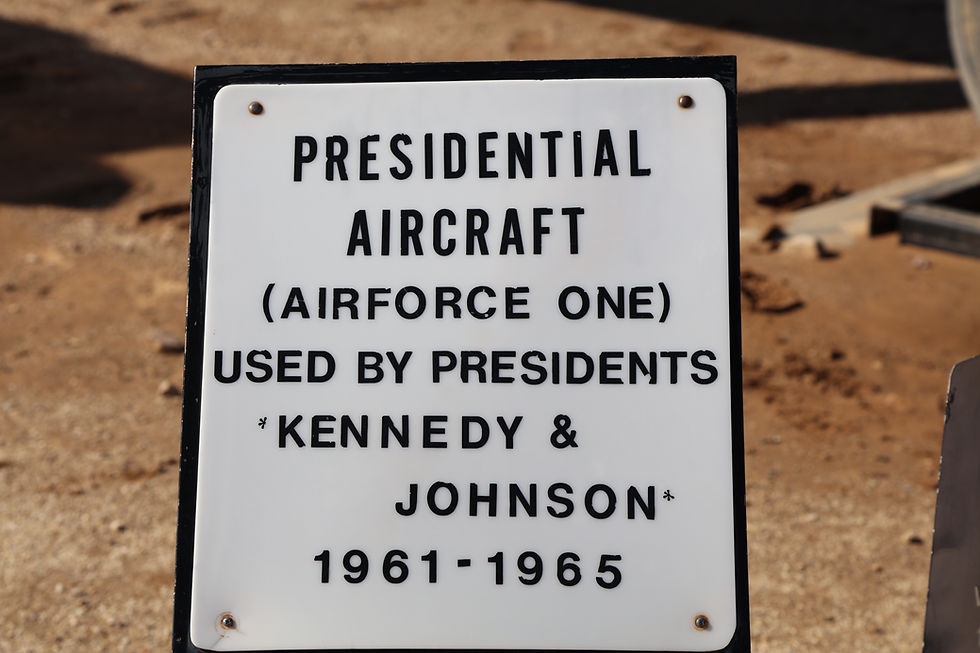Pima Air and Space Museum Tuscon, Arizona
- Deborah Kade
- Dec 3, 2019
- 3 min read
Updated: Dec 19, 2019
November 30, 2019
The Pima Air & Space Museum, located in Tucson, Arizona, is one of the world's largest non government funded aerospace museums.
The museum features a display of nearly 300 aircraft spread out over 80 acres, (320,000 m²), on a campus occupying 127 acres, (610,000 m²). It has also been the home to the Arizona Aviation Hall of Fame since 1991.




A large number of the museum's aircraft are displayed outside with the remainder located in one of the museum's four display hangars. In addition to the display hangars, the museum has a restoration hangar.









Opened to the public in May 1976 with 48 aircraft then on display, the museum's main hangar houses an SR-71A Blackbird, an A-10 Warthog, a United States Air Force Through the Years exhibit, and a mock-up of a control tower.


























Sikorsky CH-54A
Tarhe (Skycrane)
Heavy Lift Transport
1966- Present








Mil
Mi-24D
Hind D
Attack Helicopter
1972- present










Boeing B-52D
Stratofortress Bomber
1956- 1983










AVRO
AEW. Mk. 2
Shackleton
Airborne Early Warning
1951-1991










Boeing
KC-97G
Stratofreighter
Aerial Tanker
1950-1978





















Douglas
B-26K
Invader
Attack Bomber
1944-1969
A-26A
A means attack
















During 2015, Boeing donated to the museum the second 787 aircraft to be built. It is exhibited in the colors of the 787 customer, ANA.



































"The Boeing B-17 Flying Fortress is a four-engine heavy bomber developed in the 1930's for the United States Army Air Corps (USAAC). Competing against Douglas and Martin for a contract to build 200 bombers, the Boeing entry (prototype Model 299/XB-17) outperformed both competitors and exceeded the air corps' performance specifications. Although Boeing lost the contract (to the Douglas B-18 Bolo) because the prototype crashed, the air corps ordered 13 more B-17s for further evaluation. From its introduction in 1938, the B-17 Flying Fortress evolved through numerous design advances, becoming the third most produces bomber of all time, behind the four-engine B-24 and the multirole, twin-engine Ju 88.
The B-17 was primarily employed by the USAAF in the daylight strategic bombing campaign of World War II against German industrial and military targets. The United States Eighth Air Force, based at many airfields in central, eastern and southern England, and the Fifteenth Air Force, based in Italy, complemented the RAF Bomber Command's nighttime area bombing in the Combined Bomber Offensive to help secure air superiority over the cities, factories and battlefields of Western Europe in preparation for the invasion of France in 1944. The B-17 also participated to a lesser extent in the War in the Pacific, early in World War II, where it conducted raids against Japanese shipping and airfields.
From its prewar inception, the USAAC (by June 1941, the USAAF) promoted the aircraft as a strategic weapon; it was a relatively fast, high-flying, long-range bomber with heavy defensive armament at the expense of bomb load. It developed a reputation for toughness based upon stories and photos of badly damaged B-17s safely returning to base. The B-17 dropped more bombs than any other U.S. aircraft in World War II. Of approximately 1.5 million tons of bombs dropped on Nazi Germany and its occupied territories by U.S. aircraft, over 640,000 tons were dropped from B-17s. In addition to its role as a bomber, the B-17 was also employed as a transport, antisubmarine aircraft, drone controller, and search-and-rescue aircraft.
As of October 2019, 9 aircraft remain airworthy, though none of them were ever flown in combat. Dozens more are in storage or on static display. The oldest of these is a D-series flown in combat in the Pacific and the Caribbean."










































Back outside to see more planes.






To exit, you need to walk through the first building again. Love this section of the exhibit.
























For me, this is an impressive plane.



























The museum is adjacent to Davis-Monthan Air Force Base. The 309th Aerospace Maintenance and Regeneration Group (AMARG), affiliated with the base, also known as the "Graveyard of Planes" or "The Boneyard", is the largest aircraft storage and preservation facility in the world.





Comments